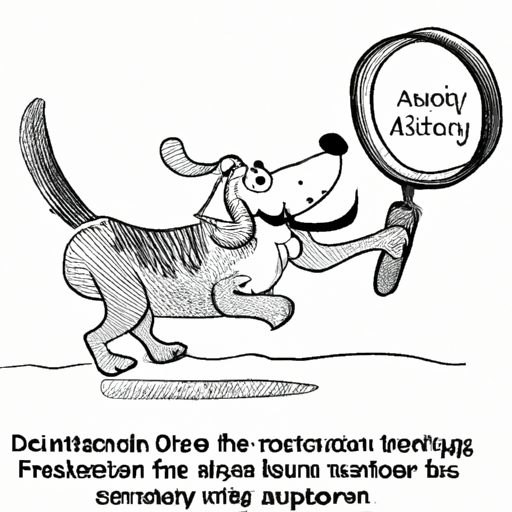Introduction to Canine Communication
You might think that a wagging tail simply means a happy dog, but it’s much more complex than that. Dogs use their tails to communicate a variety of emotions, including happiness, fear, and even aggression. Understanding the language of tail wagging can help you better understand your furry friend and respond appropriately to their needs.
The Science Behind Tail Wagging
Firstly, you should know that tail wagging is a natural behavior in dogs, rooted deeply in their biology and behavioral patterns.
- Emotional Barometer: Much like humans use facial expressions and body language to convey emotions, dogs use their tails as an emotional barometer. The position and motion of a dog’s tail can provide valuable insight into their emotional state.
- Brain Hemisphere Control: The direction of the tail wagging also has significance. Studies suggest that dogs wag their tails to the right when they’re happy and to the left when they’re frightened or anxious. This is because the different hemispheres of a dog’s brain control positive and negative emotions.
Decoding Tail Positions and Motions
To help you understand your dog’s tail wagging, here’s a simple guide:
- High and stiff: If your dog’s tail is held high and stiff, they might be demonstrating dominance or aggression.
- Low or between the legs: If your dog’s tail is low or tucked between their legs, they may be scared or submissive.
- Broad wag: A broad wag is usually a friendly signal, often indicating that the dog is comfortable and happy.
Interpreting Your Dog’s Tail Wagging
| Tail Position | Meaning |
|---|---|
| High and stiff | Dominance or aggression |
| Low or between legs | Fear or submission |
| Broad wag | Happiness or comfort |
It’s important to remember that tail wagging is just one component of your dog’s body language. You should also pay attention to other signs like ear position, facial expression, and overall body posture.
Tail Wagging: A Vital Part of Dog-Human Bonding
As a caregiver, understanding your dog’s tail wagging can improve your relationship and communication. It allows you to respond effectively to your dog’s needs, whether they’re happy, scared, or anxious. This understanding fosters a deeper bond, enhancing the health and happiness of both you and your furry friend.
FAQ
Q: Are there breed-specific differences in tail wagging?
A: Yes, different breeds have different tail types and wagging styles. For example, greyhounds have thin, whip-like tails, while pugs have tightly curled ones.
Q: Can my dog wag their tail even when they’re not happy?
A: Absolutely. Dogs can wag their tails to express a range of emotions, not just happiness.
Q: How can I tell if my dog is wagging their tail because they’re happy or anxious?
A: Pay attention to the direction and style of the wag, as well as other body language cues.
Q: Does tail wagging have any other purpose besides communication?
A: Yes, dogs also use their tails for balance while running and swimming.
Remember, tail wagging is a complex language. Understanding it can help you care for your dog in the most loving and responsive way possible.



